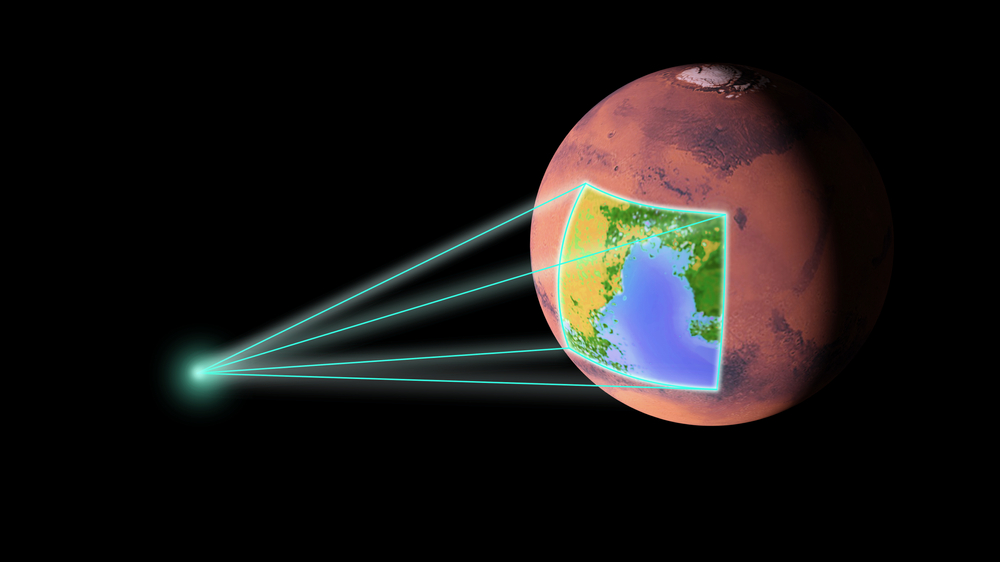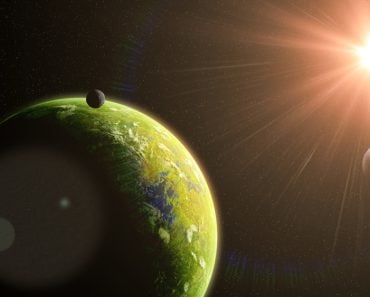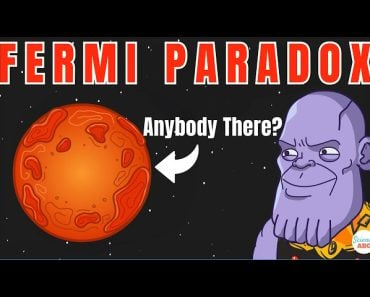Table of Contents (click to expand)
Whether it is constructing a planet-like space station or a full planetary replica, we are unlikely to witness this feat, at least in our lifetimes. However, terraforming an existing planet is a more viable option.
These days, it seems like everyone wants to go into space. Some even want to build a nation in space!
With global threats like climate change, overpopulation, and pandemics lurking around every corner, it’s always good to have a backup plan ready. The obvious plan is to reach out into space and discover places where we can build colonies away from Earth.
We often see humans inhabiting planet-sized objects in science fiction. From the legendary Death Star of Star Wars to the planet-building facility in The Hitchhikers Guide To The Galaxy, geeks like us have been toying with the idea of making a livable planet of our own for a long time. The question is, can we do it? If so, how can we go about doing it?
Recommended Video for you:
Basic Habitable Conditions Of A Planet
To start off, if we intend to inhabit an artificially built planet, we would need to find a good spot for it in space. Most importantly, it needs to be in a habitable zone. This means that the orbit of this artificially built planet, or its distance from the nearest star, should be just right for temperatures to be livable.
If this planet is too close to the star, we would simply be roasted by star’s heat, while too far away means that we would be deep freeze in the cold temperatures. Also, we would need an abundant supply of liquid water, because there can be no life without water.

Besides being the right temperature and right distance from the star, we would also need to have an atmosphere with breathable air, a stable Earth-like gravity, proper day and night cycles, and so on. If we can meet these preliminary conditions, only then can we think about constructing a habitable planet from scratch.
Now, what would be considered an “artificial but habitable planet” could have two interpretations. The literal interpretation is making a planetary replica, wherein a massive chunk of rock is fabricated into a giant sphere, and would be almost indistinguishable from the other planets in our Solar System. The other way to go about it is to build a massive satellite in space, perhaps a spherical space station, like the Death Star from Star Wars. This second option will not be a planet in the true sense, except for the spherical shape. It also would not be orbiting in a fixed orbit around the Sun, but would perhaps just hover above Earth like our other satellites.
Either of the approaches would be one heck of a job for engineers and scientists, but the second one is comparatively more viable, so let’s start there.
Planet-like Space Station
As mentioned earlier, building a spherical space station resembling a planet is easier than building a gigantic Earth-like planet. The Death Star, as shown in Star Wars IV: A New Hope, had a diameter of approximately 75 miles, which is very big! For perspective, the biggest space station we’ve ever built is less than 0.1 mile in length. However, when you compare a station like that to the 7900-mile diameter of Earth, it would still look like a dwarf. Nevertheless, let’s stick to 75 miles for the size for simplicity.
If we create this new planet-like space station like we make an aircraft carrier, and build it primarily from steel, then around one quadrillion ton (105) tonnes of steel would be needed. Procuring this much steel with our present technological advancements would require more than 800,000 years to procure the steel alone! Presently we are only able to produce about 1.8 billion tons of steel annually around the globe.
The only workaround to get raw materials for the construction of this type of planet-like space station is to procure it from space itself, rather than relying on Earth’s resources. We would likely need to mine asteroids and maybe even our Moon for that. In fact, many companies are working on this idea and several studies on this topic are ongoing. You can read more about it here.
Now, assuming we somehow overcome this logistical challenge of procuring raw materials, we would need to have advanced robots (capable of working in microgravity) capable of building a spherical body that we could inhabit.
We would need to build this planet-like space station such that it has Earth-like gravity, because our bodies get messed up in the absence of gravity. Astronauts who are on long assignments at the International Space Station (ISS) often have to deal with bone mass loss, low blood pressure, and other health issues that are attributed to microgravity.
While making this planet-like spherical space station resembling a Death Star sounds like a cool idea, it is likely to suffer from an inherent flaw: lack of stability. To keep it stable, a lot of active maintenance would be required. We would need to be at least a Type 1 civilization on the Kardashev scale to achieve this feat, and according to some scientists, we are still a few centuries away from attaining that status. You can read more about the Kardashev scale here.
So… how about making a full-fledged planet then?
Planetary Replica
Mark Hempsell, an aerospace engineer who works for a private British aerospace company, Reactions Engines, has conducted a full-fledged study on the possibility of building a planetary replica. His work is published in the Journal of the British Interplanetary Society (JBIS).
Hempsell opines that it is not necessary to replicate Earth to its exact size in order to build its replica. We can do just fine with a smaller size replica. He reckoned that to achieve the equivalent of Earth’s gravity on an artificial planet, engineers could aim for packing one-tenth of Earth’s mass into a nearly Moon-sized sphere. For the uninitiated, Earth’s mass is 5842 quintillion tons (5.9×1024 Kg) and the Moon’s diameter is 2159 miles. That’s still a lot of rock to bring on, but Hempsell suggests how engineers could go about mimicking nature’s own way of making a planet.
Taking Cues From Nature
Rocky planets like Earth were formed from the leftover material exuded from the Sun at the time of its birth. These leftover grains coalesced together, bit by bit and chunk by chunk for millions of years until a proper planet was formed. Hempsell reckons that we can try to emulate nature’s process of building a planet, but do so at an expedited rate.
To speed things up, Hempsell suggests that we would need to build an advanced fusion facility near the Sun, wherein heavier materials that would be needed to build a new terrestrial planet could be procured. Denser elements like osmium, iridium, and platinum would be a good choice for constructing a planetary replica, according to Hempsell. Layers of these heavier elements could be laid on top of each other and we would then allow them to cool.
Hempsell admits that presently, the only way known to humanity to derive these elements is by thermonuclear explosions of supernovae. Perhaps we would need to advance to a Type 2 civilization on the Kardashev scale to build a nuclear fusion facility with that much power.
Even if we could expedite the process of planet building with this process, it would still take thousands of years to build a planet by this method, according to Hempsell.
Terraforming: A Better Alternative
Alternatively to these two fascinating ideas, there is a more feasible option—colonizing planets/moons by terraforming.
In terraforming, we don’t need to build a planet from scratch. All, we need to do is manipulate an existing planet (or moon) to make their environment habitable for life. For example, we could conduct nuclear detonations on Mars and warm the planet’s atmosphere to our liking, and then look for techniques to envelop this planet in an atmosphere, similar to Earth. Many researchers believe that this might be possible within a few decades.

So, to conclude, the idea of building a planet from scratch makes for a good science fiction plot, but in reality, we are nowhere close to achieving that in the near future. However, in a few decades, we may terraform Mars or the Moon, which would still be an incredible feat for humanity, and a new step into our cosmic future!
References (click to expand)
- International Space Station Facts and Figures - NASA. The National Aeronautics and Space Administration
- Lost in Space: Bone Density. The National Aeronautics and Space Administration
- Journal of the British Interplanetary Society. The British Interplanetary Society
- What ISS Taught Us In the Past 20 Years - Popular Mechanics. Popular Mechanics
- Terraforming and the Future of Humans in Space. The University of Maryland, College Park













